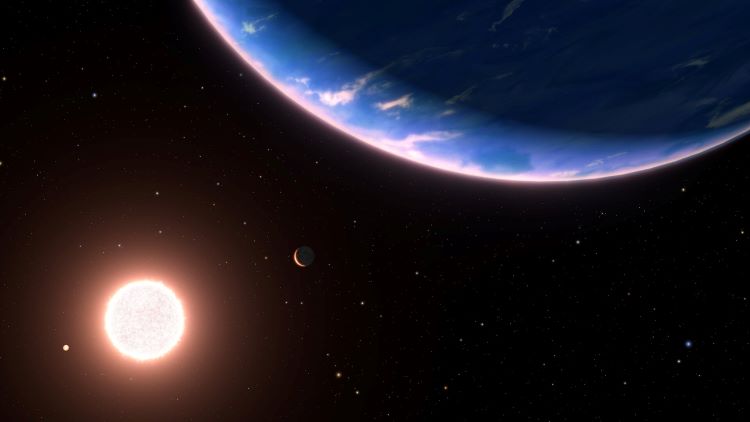It’s a classic statement shared at many public outreach events…’we are made of stardust’. It is true enough that the human body is mostly water with some other elelments like carbon which are formed inside stars just like the Sun. It’s not just common elements like carbon though for we also have slighly more rare elements like iodine and bromine. They don’t form in normal stars but instead are generated in collisions between neutron stars! It poses an interesting question, without the neutron star merger event; ‘would we exist?’
Among the plethora of elements in the human body, Iodine – which is part of the thyroid hormone system and various physiological functions such as grown, development, body temperature regulation and heart rate and bromine which is responsible for tissue development and structural integrity. These elements are formed in systems where two neutron stars are orbiting each other but lose energy through the emission of gravity waves. As the system loses energy, the neutron stars spiral closer and closer to each other culminating in a collision and the creation of iodine and bromine.
Neutron stars are formed when a massive star runs out of its fuel and undergoes collapse. As the core of the star collapses, the pressure and temperatures increase compressing all the protons and electrons into a neutron. If the mass falls within about 1 to 2 times the mass of the Sun then the collapse halts and a neutron star is formed. These objects can result in a stellar corpse the size of a city- approximately 20 km across. A sugar cube sized piece of neutron star material would weight in at 1 trillion kilograms here on Earth. that’s equivalent to the mass of a mountain! For those stars with more mass then the collapse continues to become a stellar mass blackhole.
When neutron stars collide as described earlier in this article, the event is known as a kilonovae. Certainly if Earth happened to live in the blast zone then it would most definitely not be conduscive to live but, the elements synthesized are key elements supporting our very existience. The process is known as the rapid neutron-capture, or the r-process for short. Seed nuclei capture a series of neutrons just in time to avoid radioactive decay before another neutron is captured.
The paper that was written by John Ellisa, Brian D. Fields and Rebecca Surman was published recently and it articulates the importants of the elemtns to human physiology. It also explores the possibility of searching for samples in the lunar surface that may have been depsotied by a recent kilonova explosion.












